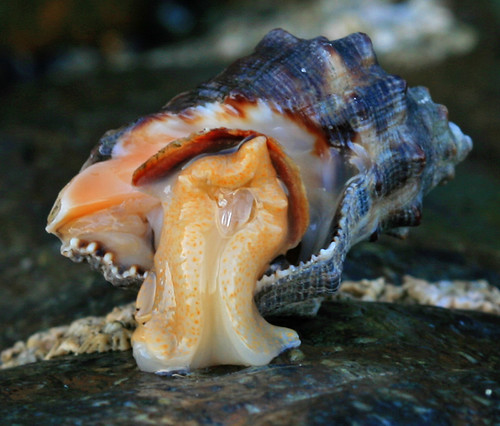I have channeled my inner "snow bird" and flown south to Florida for a family vacation. One of the first things we did - stopped at the beach! Even a couple of sick kids can't keep us from the beach on New Years Eve Day. While sitting there and digging in the sand, we found so many different shells that all had holes in them. I channeled my inner Dayna (
Baumeister, my illustrious biomimicry instructor) and explained to my daughter that the holes in the shells were not put there in order to make necklace creation easier (as she thought), but there because another type of mollusk (shelled invertebrate) drilled down into the shell with its tongue (!) and sucked out the poor clam through the hole and ate it! The predator in this area - most likely a whelk.
 |
| Cross Barred Venus (Chione cancellata) |
 |
| Lightening Whelk |
"Sea snails use a radula, their ribbon-shaped tongue, to drill a hole in the shell of the clam. While drilling, the snails soften the shells by secreting carbonic acid and inserting the siphon. The clam is then digested inside its shell as the snail gulps down the remains of what Gulf Islands National Seashore park rangers call a 'clam milkshake.'" (Credit 6)
 |
| Whelk Tongue (Photo Credit 7) |
Setting aside our pity for the poor clam, this is pretty cool. Looking at the perfectly shaped holes in the shells, you can't help but be amazed by nature's engineering. And my daughter had a lot of fun making a necklace out of her found objects from Nature.
Reference:
- http://www.iloveshelling.com/blog/seashell-identification/
- http://www.sanibelflorida.com/seashellident.html
- http://www.mitchellspublications.com/guides/shells/articles/0066/
- http://www.sms.si.edu/irlspec/chione_cancellata.htm
- http://en.wikipedia.org/wiki/Lightning_whelk
- http://www.visitpensacola.com/articles/local-shells-wildlife-plants
- http://www.flickriver.com/photos/hypergurl/1442499764/




No comments:
Post a Comment